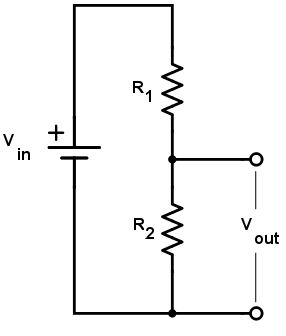Use this tool to calculate the output voltage of a resistor divider circuit for a given set of resistor values and source voltage

The Voltage Divider Calculator is a simple yet effective tool for electronics engineers, students, and hobbyists to determine the output voltage of a voltage divider circuit. Voltage dividers are one of the most fundamental circuits in electronics, used to reduce voltage, create reference voltages, and interface components operating at different voltage levels.
This calculator allows you to quickly compute the output voltage using the input voltage and resistor values.
Why Use This Calculator?
The Voltage Divider Calculator offers several advantages:
- Quick and Accurate Calculations: Eliminates the need for manual calculations, providing fast and reliable results.
- User-Friendly Interface: Requires minimal input, making it easy to use for both beginners and professionals.
- Helps in Circuit Design: Assists in selecting appropriate resistor values for designing voltage dividers in your circuit.
- Supports Various Applications: Ideal for designing voltage reference circuits, sensor interfaces, and biasing stages in amplifiers.
- Free and Accessible: Available online at no cost, providing convenience for users.
How to Use the Voltage Divider Calculator
To use this calculator, follow these steps:
- Enter Input Voltage (Vin): Specify the input voltage of the circuit (in volts).
- Enter Resistor Values (R1 and R2): Input the values of the two resistors in the voltage divider (in ohms, Ω).
- Click Calculate: The calculator will display the output voltage (Vout).
Formula:
The output voltage of a voltage divider circuit can be determined using the following formula:

Where:
- Vout is the output voltage (in volts),
- Vin is the input voltage (in volts),
- R1 is the first resistor (in ohms, Ω),
- R2 is the second resistor (in ohms, Ω).
Applications of the Voltage Divider Calculator
The Voltage Divider Calculator is useful in a wide range of scenarios, including:
- Sensor Interfacing: Helps scale down sensor output voltages for microcontroller input pins.
- Biasing Amplifiers: Assists in setting the correct bias voltage for transistor amplifiers.
- Reference Voltage Creation: Used in circuits to generate reference voltages for ADCs or other components.
- Level Shifting: Aids in creating voltage level translators for circuits interfacing components with different voltage requirements.
- Testing and Prototyping: Provides a quick way to determine output voltage values during circuit testing and prototyping.













